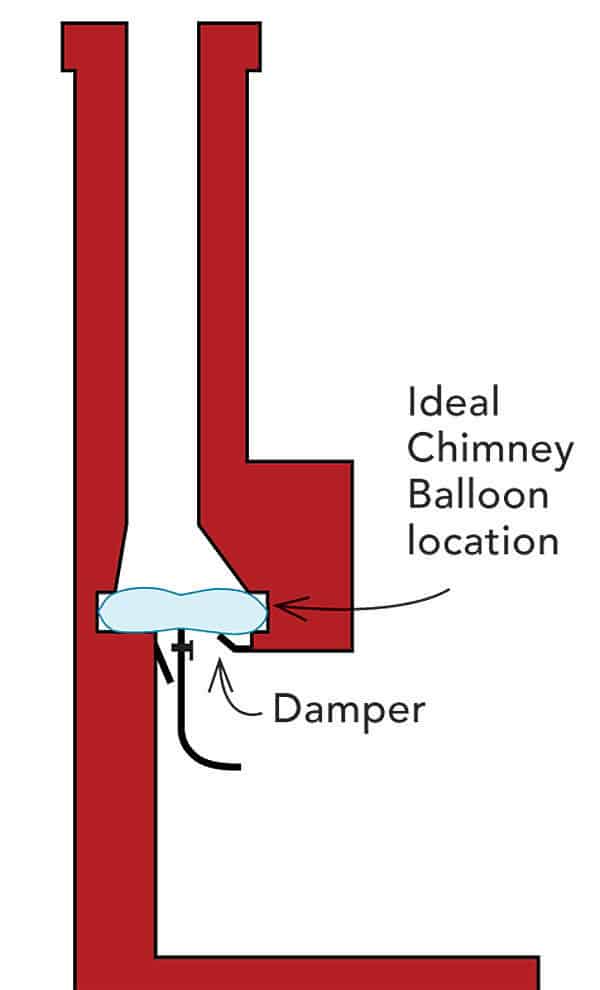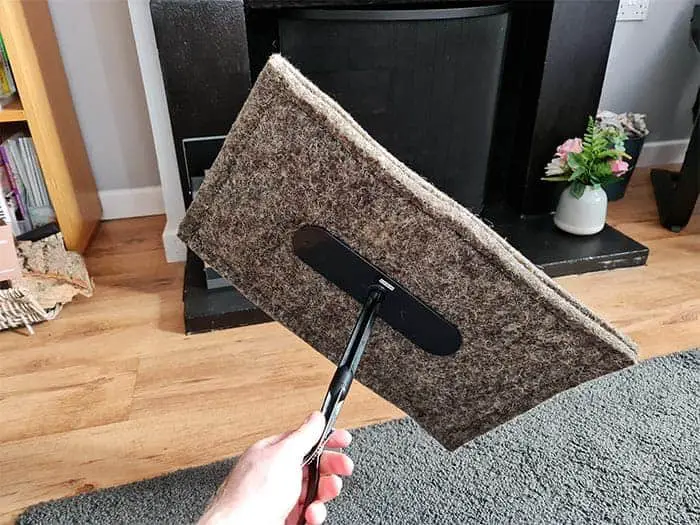Eliminating standard chimney stack ash is straightforward. Yet, if you have substantial creosote development, you must bring in a star. We’ll tell you the best way to assess yours is to check whether it qualifies as a DIY job. If it does, follow these steps. In any case, recruit an assured stack sweep. Clean creosote development from all pieces of the chimney stack.
Most fireplace fires start in the smoke chamber/rack region, so it’s the leading region to clean. Since that space is difficult to reach in certain chimneys, look at yours to check whether you can venture into it and still have space to move a brush. In the primary event that you can’t get at it, this isn’t a DIY project. Next, check whether you can get to the chimney stack crown. If you have an exceptionally steep rooftop pitch or aren’t happy dealing with your rooftop, then, at that point, this isn’t a task for you. Call it a confirmed stack clear.
A fireplace draft cover or stopper is a system that blocks up the chimney and helps prevent the movement of air-generating cold drafts. Simply put, this system removes the force pulling air inside your house through the chimney.

Chimney balloon in the image above
What is a chimney balloon or stopper?
The Chimney balloon represents a fireplace draft stopper that effectively blocks the chimney, stopping cold air and warm air from escaping.
If you decide you can deal with the heights, make a point of wearing a safety harness. Creosote development may not look hazardous, but it lights at a simple 451 degrees F, and when it begins to consume, it grows like froth sealant. In under a moment, it works to more than 2,000 degrees F and can overwhelm your whole smokestack and eradicate your home. Regardless of whether you clean your stack regularly, it would be best to have it inspected by a certified smokestack cleaner once a year. Ensured chimney stack clears are prepared to perceive the crumbling and venting issues and can survey your chimney smokestack’s condition.
How do you stop the draft from the fireplace?
To stop the draft from the fireplace, you need to close the damper between fires, or you can use a draft stopper if a fireplace doesn’t have a damper. If you decide to use a chimney balloon or draft excluder as a draft stopper, you need to remove the draft stopper before any fire.
If you consume, for the most part, green (wet) logs, have your stack cleaned or reviewed every 50 minutes. On the last chance, you can see dampness rising out of the logs’ end when consumed; the wood is wet. This green wood doesn’t finish neatly and sends a tonne of unburned particles (smoke) up the chimney stack, where they develop as creosote and ash.
Dry hardwoods, like oak and birch, smoke more smoke and are cleaner. Has your chimney stack been cleaned or investigated every 70 days by them?
Look at our assortment of tips for purchasing the best firewood. A speedy way of telling if your stack needs cleaning is to run the place of your chimney along with the liner of your fireplace. In the trauma that you track down, a 1/8-in. Or, on the other hand, more layers of development (the thickness of a nickel), called a stack clear.
The more significant part of the chimney stack ranges might see 40 to 50 chimney stack fires a year. Many chimney stacks require additional cleaning because mortgage holders sometimes stand by excessively before calling. The solidified development layer necessitates cleaning with extraordinary apparatuses or synthetics in exceptional circumstances. In addition, see our idiot-proof ways of lighting a fire in the chimney. An expert cleaning incorporates a review for residue development, obstacles, smokestack liner breaks, and water harm indications. More seasoned fireplaces frequently have holes between earth liner areas where the mortar has dropped out.
While recruiting a fireplace clear, search for somebody who’s guaranteed and safeguarded and will give a forthright quote. (Contact the Chimney Safety Institute of America at csia.org for a rundown of ensured smokestack clears.) Next, strap on goggles and a respirator, wipe the cinders out of the firebox, and eliminate the mesh. Then, at that point, open an entryway or window and stand by a couple moments before opening the damper so the tensions even out. Then, at that point, open the damper and trust that hotness will ascend from the house.
Get your most brilliant electric lamp and a chimney poker and incline toward the firebox. Focus your light onto the smoke chamber and pipe and utilize the poker to expose what’s underneath. If the residue has a matte dark end and the scratch is 1/8 in. profound or less, it’s DIY work. However, if the development is more profound or has a sparkling, tar-like appearance, you have substantial creosote development.
Let us see how to block cold air from the fireplace:
How to keep cold air out of the fireplace?
To keep cold air out of the fireplace, we can use:
- Top-sealing damper to keep cold air out
- Install a Fireplace Door (cabinet doors) to block chilly air from the fireplace
- Use Chimney Balloons or Chimney Pillows; Chimney Plugs as fireplace draft stopper
- Permanently seal the chimney and fix the problem with cold air
Quit utilizing your chimney quickly and call an expert chimney stack sweep. A draught plug (a.k.a. a draught blocker) is a snakelike fabric tube loaded with batting, rice, beans, or other material. Laid across breaks under entryways and around windows, a draught plug behaves like texture weatherstripping. It keeps cold air from blowing inside, like holding warm air back from escaping. It’s an excellent soundproofing tool that can close out the exhaust and smells. When we consider draught plugs; we picture a work of art, the wiener molded kind. But, as it may be, there are other valuable and straightforward ways of stopping air spills in your home and for example, adding cozy window hangings and drapes and clearing the entryway with silicone.
How do you cover the fireplace during winter?
The most advanced way to cover the fireplace during the winter is to use a magnetic fireplace vent cover on the lower vent to stop the inner air circulation. Additionally, you can use a draft stopper, usually long and with rectangular cloth tubes stuffed with soft, pliable filling.

How can heat be kept from escaping through the fireplace?
To keep heat from escaping through the fireplace, you can use a draft excluder chimney balloon or any throat damper as a fireplace draft stopper. A throat damper is typically found inside the fireplace above the firebox.
Installation of Essentials Regarding the placement of the chimney
Installing rubber-coated weatherstripping around sliding doors, carports, and pet entrances; putting inflatable chimney stacks or frothy elastic wedges inside chimneys; Filling gaps in divider protection. Because draught plugs hold air back from streaming openly all through your home, there is no question that they can save you gobs of cash on your energy bills.
Try not to toss cash out the window. A straightforward draught plug is a sealed shut, energy-monitoring arrangement you’ve sought. Use a draught plug to remain warm and comfortable whenever you need your home. A drafting buster (a wind blocker) is a snake-shaped textile tube filled with batting, rice, beans, or other materials. A draught stopper operates similarly to cloth weatherstripping when placed over crevices beneath doors and round frames. It keeps chilly air from flying inside and prevents warm air from exiting. It’s also an excellent insulating material that can block smells and aromas.
They use 90% less energy than a climate control system, and in dry environments with cool mornings and nights, they can supplant your AC framework. -Easy establishment. With a partner and essential apparatuses, you can introduce an entire house fan at the end of the week.
They can’t chill the interior any less than the outside temperature, and they can’t humidify.
They can aggravate allergies. Pretty much all the fans bring in dust from outside.
More giant fans move air swiftly but are more expensive to buy and operate. They also need more attic airflow and produce more sound than shorter attic fans.
To conclude:
How to block the draft from the gas fireplace?
The best way to vent gas fireplaces is to use glass doors (cabinets) on the front of your fireplace opening or stopper, such as a chimney balloon or fabric draft blocker. The most advanced way is to use a magnetic fireplace vent cover to stop the inner air circulation on the lower vent.




